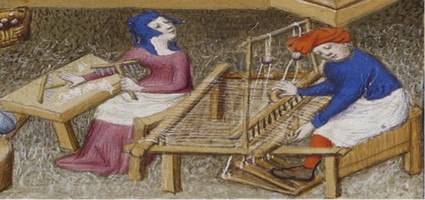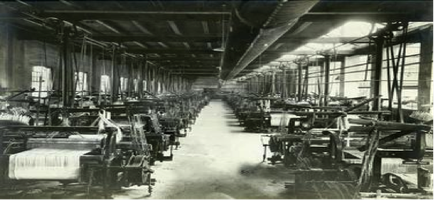The textile industry in Italy
The textile industry is one of the most important sectors of the Italian industry. The traditional success factor of the Italian textile industry is the ability to combine innovation , fashion, creative style with production technologies.
The textile industry in Italy has developed mainly in the north: in the Upper Milan area and around Biella and Bergamo. In particular Como specialized in the production of silk while the center has developed especially in Prato’s industrial district, the largest in Italy for number of companies and employees.
From the 14th century to the mid 19th
The Italian textile industry has occupied a position of supremacy in Europe since the late Middle Ages. However, in the 15th and in the 16th century, France and England became the new centers of textile production and, a century later, these countries extended their hegemony on international textile markets, both in the North of Europe and in the Mediterranean basin; consequently, from the middle of the 17th century Italian cities like Florence, a long- time specialist in textile production, went losing importance.
The Italian textile industry between 1650 and 1850 was characterized by a series of technological and socio-economic elements: first, textile production was located in small towns and in the countryside and concerned the manufacturing of medium - low quality cloths; secondly, it relied prominently on the use of female and child labor poorly qualified and low cost and, for this reason, the mechanization of most of the production steps was still very reduced; thirdly, in order to have water and hydraulic energy, proto-factories and workshops of the dyers were located near rivers .


From the Unification to the First World War
The unification of the Kingdom of Italy in 1861 represented a great opportunity to expand the markets for textile production centers, especially in the northern areas.
It was the North - West of the country to be the center of the new industrialization: on the basis of the first general industrial census in 1911, three-quarters of all workers engaged in the textile sector focused only in Piedmont and Lombardy.
At the end of the 19th century, the silk industry underwent profound developments both technical and commercial; the sector underwent a process of mechanization and saw the increase of the number of frames. In addition, business owners took advantage of the opportunity to find locally the raw silk from Asia at low cost. This, on the other hand, determined the rapid decline of the cultivation of mulberry and silkworm rearing and the consequent lack of domestic production.

Since the Italian wool textile industry, in contrast to the silk one, was not in competition with companies in the advanced economies, most Italian industries were oriented to the domestic market. Towards the end of the 19th century, the Italian wool industry entered a phase of modernization and adopted production runs vertically integrated, thus becoming one of the largest Italian companies in terms of both employment and production, thanks to the imposition between 1887 and 1965 of protective tariffs even by 40 % and adopted a vertically integrated production.
The First World War to the Second World War
After the First World War, the artificial fibers were introduced gradually in Italy.
These new fibers were often combined with natural ones, in particular wool.
The production of artificial fibers had a rapid increase in the second two decades of the 20th century, and, in 1935, Italy (with 31 manufacturing plants and 24,000 employees) produced 15% of all man-made materials in Europe and it was the third largest producer in the world after the United States and Japan.
The cotton industry enjoyed its greatest prosperity during this period and became the most important sector in terms of capital, number of employees, equipment, energy consumption, total value of production and foreign trade.
The second post-war recovery and ' Americanization
Before the ' economic miracle ' of the fifties, the recovery was possible in Italy, from 1948 to 1952, thanks at the European Recovery Program ( ERP , also known as the Marshall Plan ). In this period, the Italian industry (large firms especially) went through a modernization and ' Americanization ' process through the provision of goods ( raw materials, particularly cotton ), services ( training and apprenticeship in America ) and fundings which allowed them to import advanced equipment from the United States .
Already during the reconstruction period the textile factories of Como began to export their fabrics in the United States and, in particular, in 1960, the luxury silk export became one of the main markets of Italian products. In 1969, the United States, France and Germany absorbed 66% of the fabrics produced in Como for export.

After the war, although the use of wool declined in many Western countries, demand and world supply suffered a dramatic and steady increase due to the rapid growth of the Far East. The Italian textile industry of wool, once overcome the difficulties in access to supplies of raw material, recovered and grew considerably since the early fifties.
The most established Italian wool mills had built an excellent reputation based primarily on the elegance of their fabrics.
The reason why this type of tissue is produced in Italy is that the textile companies set great value on the sensory characteristics such as appearance, lightness and texture, and employ sophisticated production processes.
Winning choices: local / global
The industrialization of the Italian textile sector, at the end of the Second World War, led to a recovery process from the starting disadvantage compared to the textile industries of advanced economies such as the United Kingdom, France, Belgium, Germany and the United States.
One of the features that distinguished Italian textile entrepreneurs from those of other Western economies, was respect for the nationality and location, screened in a global perspective.